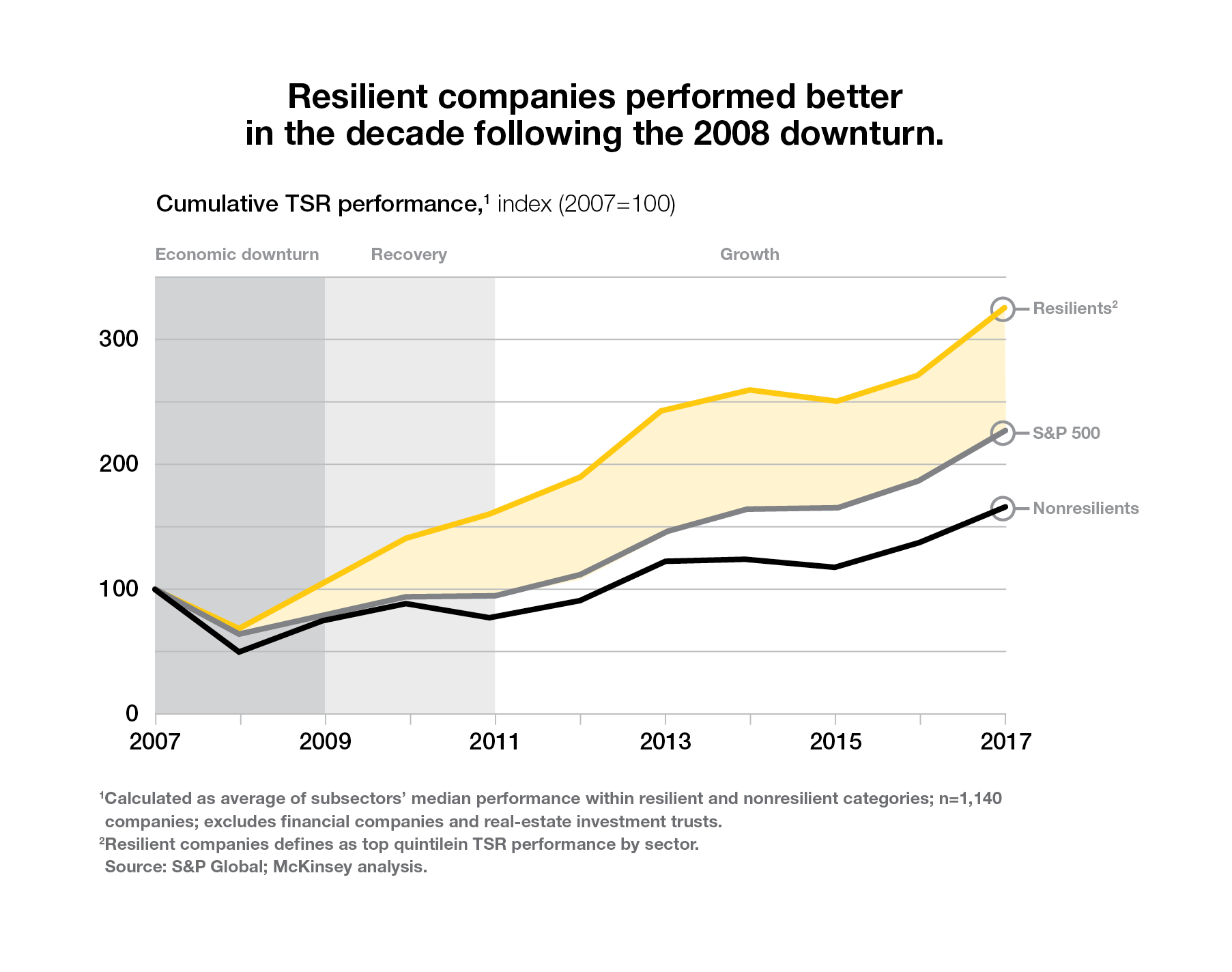by Phil Huzzard | Aug 31, 2023 | Thinking
Four ways to win in an economic downturn
Can taking a considered investment approach to maintaining your marketing budget during uncertain times drive business resilience and increase market share? Let's find out.
There’s been endless talk of a softening economy towards the end of the 2023. And while we all hope firmer commodity prices and continuing government stimulus in infrastructure will insulate us from a hard landing, we’re already seeing redundancies in the marketing sector as decision makers begin to reshape their overheads.
It’s times like these when you need to think clearly about what to cut, the longer-term impacts of those cuts – both positive and negative – and the business case for these kinds of uncomfortable decisions.
I believe cutting marketing spend during tough times is a mistake. The best marketers need to adopt an investor mindset during downturns instead. There are simple, highly effective strategies you can embrace to ensure you emerge from a slowdown bigger and stronger than when you went in.
Spending when your competitors pull back – lessons from the past.
During The Great Depression, a relatively small Ohio-based personal products manufacturer, Proctor & Gamble, pursued a new marketing avenue rather than pulling back from marketing commitments like its competitors. The manufacturer began sponsoring daily radio serials aimed at homemakers, the company's core market. In 1933, P&G debuted its first serial, Oxydol’s Own Ma Perkins. Women around the country quickly fell in love with the tales of the kind widow who was always willing to lend a hand.
The program was so successful that P&G began commissioning and sponsoring similar programs to support its other brands. By 1939, it was producing 21 radio shows that set P&G up as a global powerhouse and pioneered the ‘soap opera’.

Marketing should be a priority during uncertain times – not an afterthought. Despite economic challenges, consumers continue to spend. However, now with a stronger focus on value. A survey conducted in March 2023 revealed that, despite 80% of consumers hunting for lower costs, spending on essentials remains relatively strong (Brandwatch 2023).
Savings among consumers have also rapidly grown since the early stages of the pandemic. In some categories, they have even surpassed pre-pandemic levels. This combination of historical success and consumer intent presents a golden opportunity for companies to prioritise marketing as a driver of growth and resilience.
Even if sales do take a dip, growing market share is a genuine and achievable possibility. When things do inevitably improve, any market share growth will be worth a lot.
A McKinsey study conducted during and after The Great Recession of 2008 found that companies that prioritised growth during tough economic times achieved above-market total shareholder returns for the next ten years. These companies not only weathered the storm but became top performers in their respective sectors.

An investor mindset towards marketing during an economic setback requires a move away from indiscriminate budget cuts and the adoption of a more strategic approach to resource allocation. By eliminating inefficient spending and redirecting resources to high-growth areas, companies can create distance from their competitors and achieve sustainable growth.
Four priorities during an economic downturn
Want to get it right for your business? Focus your attention on:
- Your customer: When things are going well, it’s easy to settle into habits based on outdated consumer preferences. Now is the time to prioritise the current needs and preferences of consumers. By understanding consumer behaviour and changing attitudes, you can tailor your strategies to deliver greater value and build lasting relationships. This customer-centric approach during a downturn can drive longer-term growth and differentiation.
- Your creativity: Get more creative. Higher impact creative is the most effective growth engine. It can increase effectiveness by factors. Imagine being able to increase brand recall and preference by factors, simply by insisting on cut-through advertising ideas. That’s the power of great creative. But you may also need to think creatively about how you can achieve this on a smaller budget.
- Your focus: Apply rigour across all your marketing spend. By identifying areas of inefficient spend and reallocating budget to targeted growth opportunities, you can demonstrate ROI and align marketing efforts with overall business objectives.
- Your longer-term measures of success: During uncertain times, it's crucial you can protect your marketing budgets. You can do this through longer-term ROI and value creation. You may need to convince your fellow C-Suite executives that the inevitable recovery will favour the bold over those who have ‘battened down the hatches’.
History shows that marketing is not just an overhead or a cost of sale. It has potential to drive long-term growth and resilience – especially in an economic downturn. By adopting an investor mindset and implementing efficient and effective media and creative strategies, companies can weather economic storms and emerge bigger, better and more successful.
Ready to forge ahead in creative advertising? Get in touch.






